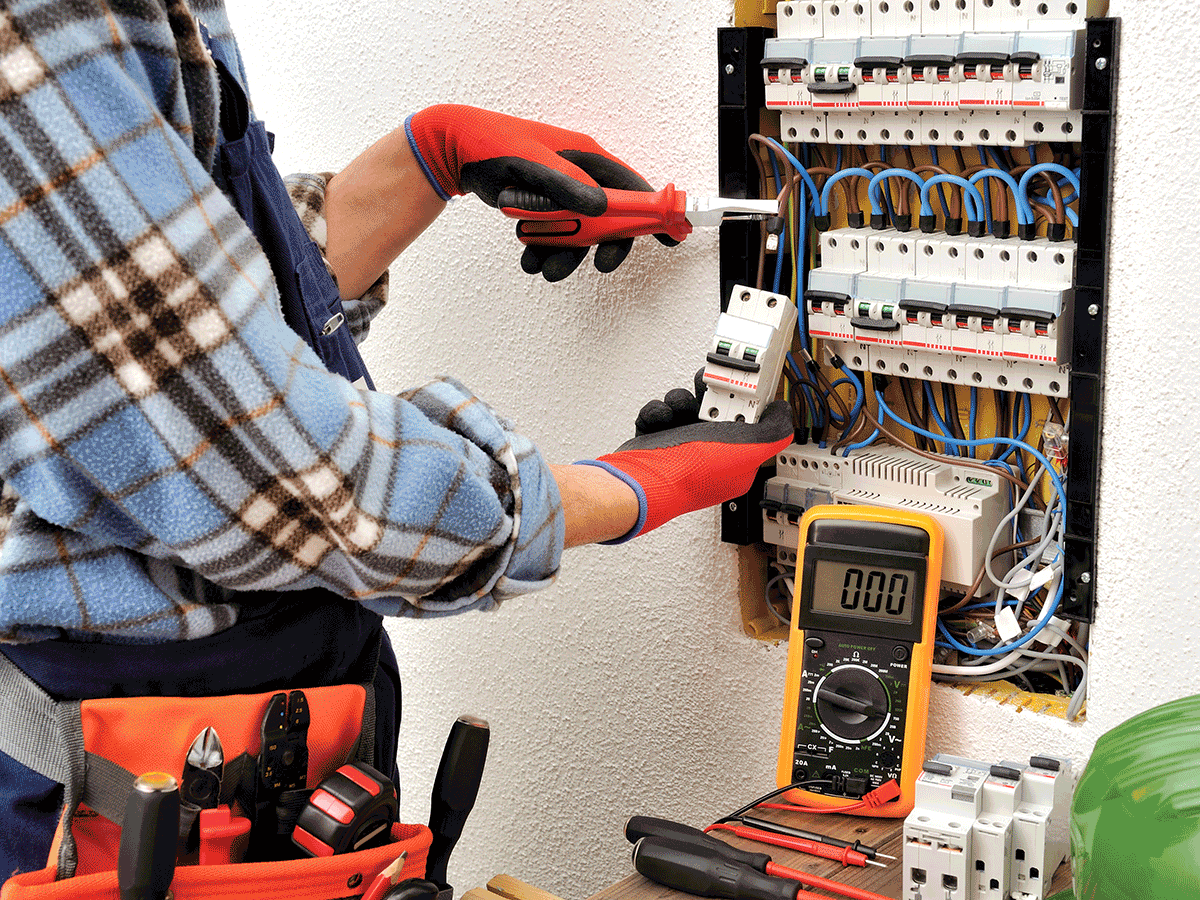This article is the result of questions from the readers on the application of the Canadian Electrical Code, Part I (CE Code) to the maintenance of electrical equipment. It presents a compilation of 8 answers to the questions on the referenced subject.
Question 1
Does the CE code apply to the maintenance of electrical equipment?
Answer to question 1: So, what does the CE code say about the maintenance of electrical equipment?
“The object of this Code is to establish safety standards for the installation and maintenance of electrical equipment. In its preparation, consideration has been given to the prevention of fire and shock hazards, as well as proper maintenance and operation.
The requirements in this Code address the fundamental principles of protection for safety contained in Section 131 of International Electrotechnical Commission Standard 60364-1, Low-voltage electrical installations. IEC 60364-1, Section 131, contains fundamental principles of protection for safety that encompass protection against electric shock, thermal effects, overcurrent, fault currents, and overvoltage. Therefore, compliance with the requirements of this Code and proper maintenance will ensure an essentially safe installation.”
The scope of the CE Code offers the following provisions regarding the operation of electrical equipment:
“Scope
This Code applies to all electrical work and electrical equipment operating or intended to operate at all voltages in electrical installations for buildings, structures, and premises, including factory-built relocatable and non-relocatable structures, and self-propelled marine vessels stationary for periods exceeding five months and connected to a shore supply of electricity continuously or from time to time…”
Question 2
Maintenance and operation of which electrical equipment is exempt from the scope of the CE Code?
Answer to question 2: The scope of the CE Code does not apply to electrical work and to electrical equipment to the following:
“a) installations or equipment employed by an electric, communication, or community antenna distribution system utility in the exercise of its function as a utility, as recognized by the regulatory authority having jurisdiction, and located outdoors or in buildings or sections of buildings used for that purpose;
b) equipment and facilities that are used in the operation of an electric railway and are supplied exclusively from circuits that supply the motive power;
c) installations or equipment used for railway signaling and railway communication purposes, and located outdoors or in buildings or sections of buildings used exclusively for such installations;
d) aircraft; and
e) electrical systems in ships that are regulated under Transport Canada.”
Question 3
Is there a difference between the maintenance and operation of electrical equipment?
Answer to question 3: Maintenance and operation of electrical equipment are components of the same process. Maintenance of electrical equipment exists to support the safe and reliable operation of this equipment. Both these activities are performed by qualified people responsible for testing, monitoring, and troubleshooting of the electrical equipment. Maintenance is provided by industrial electricians – tradespersons, who perform routine maintenance procedures and repairs that are required due to normal wear on the electrical system and electrical equipment in operation.
Question 4
Does the CE Code have specific requirements for maintenance of electrical equipment, and if it does, who is responsible for the maintenance of this equipment?
Answer to question 4: The CE Code has an entire Subsection (Rules 2-300 – 2-328) dedicated to the requirements for the maintenance and operation of electrical equipment. Rule 2-300 of the CE Code states the following:
“2-300 General requirements for maintenance and operation
1) All operating electrical equipment shall be kept in safe and proper working condition.
2) Electrical equipment maintained for emergency service shall be periodically inspected and tested as necessary to ensure its fitness for service.
3) Infrequently used electrical equipment maintained for future service shall be thoroughly inspected before use in order to determine its fitness for service.
4) Defective equipment shall either be put in good order or permanently disconnected. “
It is the building owner’s responsibility to ensure that all operating electrical equipment is maintained in safe and proper working order. Authorities having jurisdiction (electrical safety authorities) may require an annual operating permit – to perform maintenance related electrical work on the existing electrical equipment. Such operating permit may be issued to the building owner, provided that a qualified person is named on the permit with the class and certificate of qualification number of the field safety representative who will perform or supervise the maintenance work under the permit.
Question 5
Is maintenance work allowed on energized equipment?
Answer to question 5: Rule 2-304 of the CE Code prohibits any electrical work on energized equipment unless such work related to examination, adjustment, servicing, or maintenance of equipment is not feasible while equipment is fully disconnected.
Rule 2-304 of the CE Code states the following:
“2-304 Disconnection (see Appendix B)
1) No repairs or alterations shall be carried out on any live equipment except where complete disconnection of the equipment is not feasible.
2) Three-way or four-way switches shall not be considered as disconnecting means.
3) Adequate precautions, such as locks on circuit breakers or switches, warning notices, sentries, or other equally effective means, shall be taken to prevent electrical equipment from being electrically charged when work is being done. “
Appendix B note on this Rule clarifies this requirement as follows:
“Appendix B Note on Rule 2-304
Examples of tasks that are not feasible when electrical equipment has been completely disconnected are troubleshooting of control circuits, testing, and diagnostics.
It is intended by this Rule that persons performing maintenance, adjustment, servicing, or examination of energized electrical equipment adhere to all applicable safe work practices around the energized electrical equipment.
See Section 0 for the definition of Qualified person.
CSA Z462 provides assistance in determining severity of potential exposure, planning safe work practices, and selecting personal protective equipment (PPE) to protect against shock and arc flash hazards.”
Question 6
Is arc flash study in conformance with Z462 and the selection of personal protective equipment (PPE) required by the Rules of the CE Code?
Answer to question 6: No. There are no requirements in the body of the CE Code – to comply with the CSA standard Z462. Although Rule 2-304 does not allow electrical work on energized equipment, it recognizes that sometimes a complete disconnection of the operating equipment is not practicable for certain repairs, alterations, or testing. For this reason, Rule 2-306 has been introduced into the 2006 edition of the CE Code. This Rule mandates the installation of warning signs – to advise of potential shock and arc flash hazards on electrical equipment. Explanatory Note in Appendix B on this Rule leads the users of the CE Code (who intend to maintain live electrical equipment) to NFPA 70E and to IEEE 1584 to determine the severity of exposure, to evaluate the arc flash hazard distance and incident energy resulting from the arc, and to select personal protective equipment appropriate for the anticipated incident energy – to protect against shock and arc flash hazards.
So, if maintenance work is required on energized equipment in accordance with the management policies, then the building management should arrange for the performance of an arc flash study in conformance with Z462 and for the selection of personal protective equipment (PPE). Otherwise, the only warning signage is mandated by Rule 2-306 of the CE Code, as follows:
“2-306 Shock and arc flash protection (see Appendix B)
1) Electrical equipment such as switchboards, panelboards, industrial control panels, meter socket enclosures, and motor control centres that are installed in other than dwelling units and are likely to require examination, adjustment, servicing, or maintenance while energized shall be field marked to warn persons of potential electric shock and arc flash hazards.
2) The marking referred to in Subrule 1) shall be located so that it is clearly visible to persons before examination, adjustment, servicing, or maintenance of the equipment.”
Appendix B Note on Rule 2-306 offers the following clarification on this subject:
“Appendix B Note on Rule 2-306
CSA Z462 provides assistance in determining the severity of potential exposure, planning safe work practices, and selecting personal protective equipment to protect against shock and arc flash hazards. ANSI/NEMA Z535.4 provides guidelines for the design of safety signs and labels for application to products. IEEE 1584 provides assistance in determining the arc flash hazard distance and incident energy that workers may be exposed to from electrical equipment.”
Question 7
Are there any standards or guides available for the maintenance of electrical equipment?
Answer to question 7: CSA has developed and published the standard Z463 “Maintenance of electrical system.” Clause 0 of this standard, “Introduction”, provides a comprehensive explanation of the purpose and application of this standard as follows:
“0 Introduction Note: See also Annex A.
0.1 Purpose and application
This Standard has been developed to improve safety for workers and protection of property through the adoption and systematic application of maintenance strategies for electrical equipment. It specifies basic requirements for maintenance programs and provides guidance on preferred practices for maintenance of electrical equipment. The maintenance necessary for electrical equipment and systems that are critical to electrical safety for workers can be different than the maintenance required for uptime production or other business objectives. This Standard defines methods of identifying equipment and systems that directly impact worker electrical safety and the reliability necessary for the safe operation of electrical equipment.
Organizations can use this Standard to optimize the integration of other programs and systems, such as hazardous energy lockout control programs and workplace electrical safety programs, into their business management systems for critical equipment maintenance strategies.
This edition of the Standard includes exclusions in Clause 1.3 for particular industries. It is the intention to engage these industries on a go forward basis with the goal of removing the exclusion in whole or in part in future editions.
This Standard is part of the CSA Z460 series, which constitutes a compendium of electrical safety publications. The trilogy consists of
a) CSA Z460, Control of hazardous energy — Lockout and other methods;
b) CSA Z462, Workplace electrical safety; and
c) CSA Z463, Maintenance of electrical systems.”
Informative Annex A of this standard clarifies how to make a business case for a maintenance program.
The scope of the standard offers the following beneficial information:
“1 Scope
1.1 General
This Standard specifies requirements for the maintenance of electrical equipment and systems.
This Standard applies to new and existing electrical equipment. For new installations of electrical equipment, this Standard can be applied during the early design stages to allow for the implementation of proactive electrical maintenance practices and maintenance safety.
1.2 Purpose
The purpose of this Standard is to facilitate the safe, reliable, and cost-effective operation of electrical equipment and systems through the application of consistent maintenance practices.
The requirements of this Standard are intended to address worker and public safety as a primary objective and the protection of property and the environment as secondary objectives.
1.3 Application
While it can be applied by organizations of any type or size, at this time this Standard does not cover
a) installations of communications equipment under the exclusive control of communications utilities located outdoors or in building spaces used exclusively for such installations; and
b) installations under the exclusive control of an electric utility when such installations
i) consist of service drops or service laterals, and associated metering;
ii) are located in legally established easements or rights-of-way designated or recognized by public service commissions, utility commissions, or other regulatory agencies having jurisdiction for such installations; or
iii) are on property owned or leased by the electric utility for communications or for metering, generation, control, transformation, transmission, or distribution of electric energy.
Note: The term “electrical utility” is defined by the authority having jurisdiction. “
Question 8
Is an electrical permit required to perform maintenance electrical work?
Answer to question 8: The subject of permitting belongs to the administrative provisions of the CE Code.
Rule 2-004 of the CE Code states the following:
“2-004 Permit
Electrical contractors or others responsible for carrying out the work shall obtain a permit from the inspection department before commencing work with respect to installation, alteration, repair, or extension of any electrical equipment.”
Local by-laws or provincial/territorial electrical safety regulations may have to be reviewed in conjunction with such requirements (see answer to question 4 above).
For example, BC Electrical Safety Regulation provides the following statement regarding electrical maintenance work:
“Operating permit
If electrical maintenance is performed on a building or premises, the application for the operating permit must include the name, class and certificate of qualification number of the field safety representative who will perform or supervise the regulated work under the permit. “
Hopefully, the answers to the posted questions clarify the referenced subject. As usual, the local AHJ responsible for enforcement of the CE Code should be consulted for each installation.














Find Us on Socials